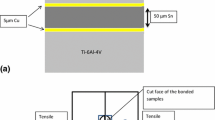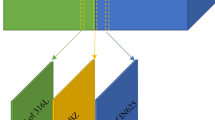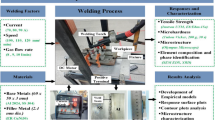Abstract
The effects of interlayers of molybdenum and copper on the strength of alumina ceramic and 1Cr18Ni9Ti stainless steel bonding with Ag57Cu38Ti5 filler metal were investigated. The interfacial morphologies were observed and analysed by scanning electron microscopy and energy dispersive X-ray (EDX) analysis, respectively. The joint strength was examined by shear tests. When using a molybdenum interlayer, the joint strength could be greatly improved because molybdenum not only reduced the interfacial residual stress, but also did not affect the interfacial reaction between the ceramic and the filler metal, and the maximum value was obtained when it was about 0.1 mm thick. When using copper as an interlayer, the joint strength was not increased but decreased, because copper reduced the activity of titanium in the filler metal, resulting in an insufficient interfacial reaction between the ceramic and the filler metal and the formation of poor interfacial adhesion. Therefore, in selecting an interlayer metal to reduce or avoid interfacial residual stress in joining ceramics to metals, in which the interfacial reaction of ceramic and filler metal is important to the joints, the interaction of interlayer metal and filler metal must be considered.
Similar content being viewed by others

References
M. Naka, M. Kubo and I. Okamoto, Trans. JWRI 19 (1990) 33.
M. Naka, T. Tanaka and I. Okamoto, Trans. JWS 21 (1990) 66.
D. H. Kim, S.H. Hwang and S. S. Chun, J. Mater. Sci. 26 (1991) 3223.
Y. Nakao, K. Nishimoto and K. Saida, Trans. JWS 21 (1990) 135.
H. C. Cho and J. Yu, Scripta Metall. 26 (1992) 797.
H. Murakawa and Y. Ueda, Trans. JWRI 18 (1989) 295.
K. Suganuma, T. Okamoto, M. Koizumi and M. Shimada, J. Mater. Sci. 4 (1985) 648.
A. P. Xian, Z. Y. Si, ibid. 27 (1992) 1560.
Idem, J. Am. Ceram. Soc. 73 (1990) 3462.
C. H. Hsueh and A. G. Evans, ibid. 68 (1985) 241.
K. Suganuma, T. Okamoto and M. Koizumi, ibid. 67 (1984) c-256.
T. Yamada, M. Satoh, A. Kohno and K. Yokoi, J. Mater. Sci. 26 (1991) 2887.
T. Yamada, K. Yokoi and A. Kohno, ibid. 25 (1990) 2188.
O. T. Iancu, D. Munz, B. Eigenmann, B. Scholtes and E. Macherauch, J. Am. Ceram. Soc. 73 (1990) 1144.
H. Q. Hao, Y. L. Wang, Z. H. Jin and X. T. Wang, ibid., to be published.
H. Q. Hao, Z. H. Jin and X. T. Wang, J. Mater. Sci. 30 (1995) 1233.
Author information
Authors and Affiliations
Rights and permissions
About this article
Cite this article
Hao, H., Wang, Y., Jin, Z. et al. The effect of interlayer metals on the strength of alumina ceramic and 1Cr18Ni9Ti stainless steel bonding. JOURNAL OF MATERIALS SCIENCE 30, 4107–4111 (1995). https://doi.org/10.1007/BF00360716
Received:
Accepted:
Published:
Issue Date:
DOI: https://doi.org/10.1007/BF00360716



